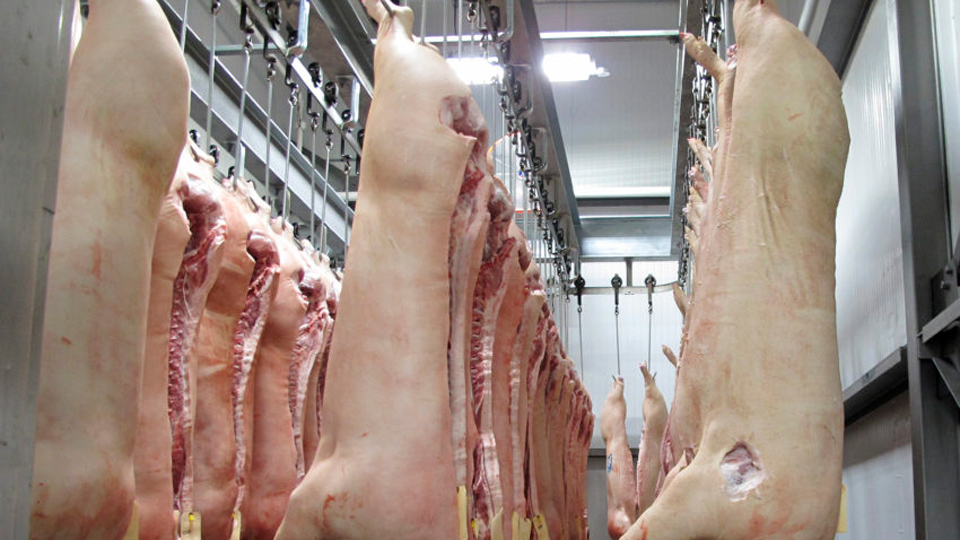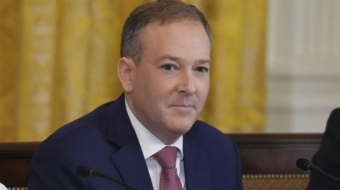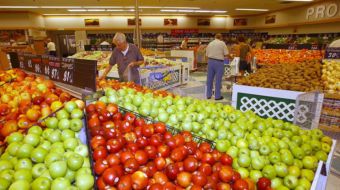
WASHINGTON — First it was chickens, now it’s pigs. The Trump administration Agriculture Department – over union and pro-worker protests – wants no speed limits on processing lines at the nation’s pork production plants.
And that could put the workers at increased risk of injury or death, say the National Employment Law Project (NELP) and the workers’ union, the United Food and Commercial Workers (UFCW). Apparently, nobody at the top of USDA has ever heard of – or read – Upton Sinclair’s classic book on what happens inside processing plants, The Jungle.
The proposal, with an April 2 comment deadline, envisions an average pork line speed of 1,200 carcasses per hour, but with no overall speed limit. The top line speed now is just over 1,100 per hour.
In a large pork plant, each pork processing line now has seven inspectors. The agency’s proposal says there could be as few as three. Like the chicken line plan, USDA would delegate many inspection duties away from federal food safety inspectors.
In the chicken case, the inspectors’ union, the Government Employees (AFGE) took President Obama’s USDA to court over the safety risk to workers and the health risk to the public. It ultimately got the speedup modified, but not repealed.
This time, so far, the pork plant workers’ union, UFCW, is strongly objecting. So are the National Employment Law Project and a veteran congressional Democrat who deals with food safety issues, Rep. Rosa DeLauro, D-Conn., former chair of the House Appropriations subcommittee that helps decide where USDA money goes.
“This desire to increase line speeds is being driven entirely by corporate greed and defies common sense,” UFCW said in a statement.
“Jobs inside pork plants are some of the most dangerous and difficult in America. We’re only putting workers at greater risk of injury and consumers at greater risk of consuming unsafe meat by asking everyone who labors inside one to work faster.”
“For the sake of keeping millions of hard-working families safe, this decision deserves immediate reconsideration.”
The union cited a 2013 report from USDA’s inspector general, who looked at a trial program in five pork processing plants to see the impact of the speedup. It “did not result in better food safety,” the IG said. In announcing the new rule, USDA implied that would be the case, as inspectors would be free to take on other tasks to prevent swine-borne illnesses before they started.
And “injury rates in the meatpacking industry are already twice as high as the national average and workplace illness rates are 20 times as high,” UFCW noted.
NELP called USDA’s pork processing line speedup “a radical change in food safety protection.”
It “decreases and privatizes food safety inspections and allows for an unlimited increase in swine slaughter line speeds, endangering workers, consumers and animal welfare…Even at current line speeds, pork slaughter and processing workers face many job risks that can lead to severe injury, illness, and death”
Also citing the IG’s report, the employment lawyers said USDA “failed to provide adequate oversight” of the pilot plants with unlimited pork line speeds. “Those plants may have a higher potential for food safety risks.”
“Jobs inside pork plants are some of the most dangerous and difficult in America, and the risk to food workers and our food supply increase as line speeds increase. With the proposed rule, the Trump administration has decided to sacrifice worker and consumer safety and animal welfare in order to line the pockets of already rich corporate executives.”
The official 44-page notice of the new rule was filled with numbers on costs to train pork plant workers to take over inspection duties, estimated savings from fewer pork-disease illnesses and deaths and the like. But it did not say how much the producers would profit from the speedups, or whether they proposed the no-speed-limit rule – as the chicken processors did.
An e-mail to USDA with those questions brought no answer. The pork producers’ lobby did not comment on its website.
“The proposed swine inspection modernization rule is another example of the administration’s unacceptable prioritization of profits over the safety of American workers and consumers,” said DeLauro, who also chairs the House Food Safety Caucus.
Modernization of food safety systems “should not occur at the expense of public health, worker safety, or animal welfare. We must improve swine inspection and reduce contamination from pathogens associated with pork such as Salmonella and Campylobacter. However, FSIS has not demonstrated through its hog slaughter pilot program that contamination— and therefore illness rates—are actually reduced. To the contrary, the available evidence suggests that these changes will undermine food safety,” DeLauro added.










